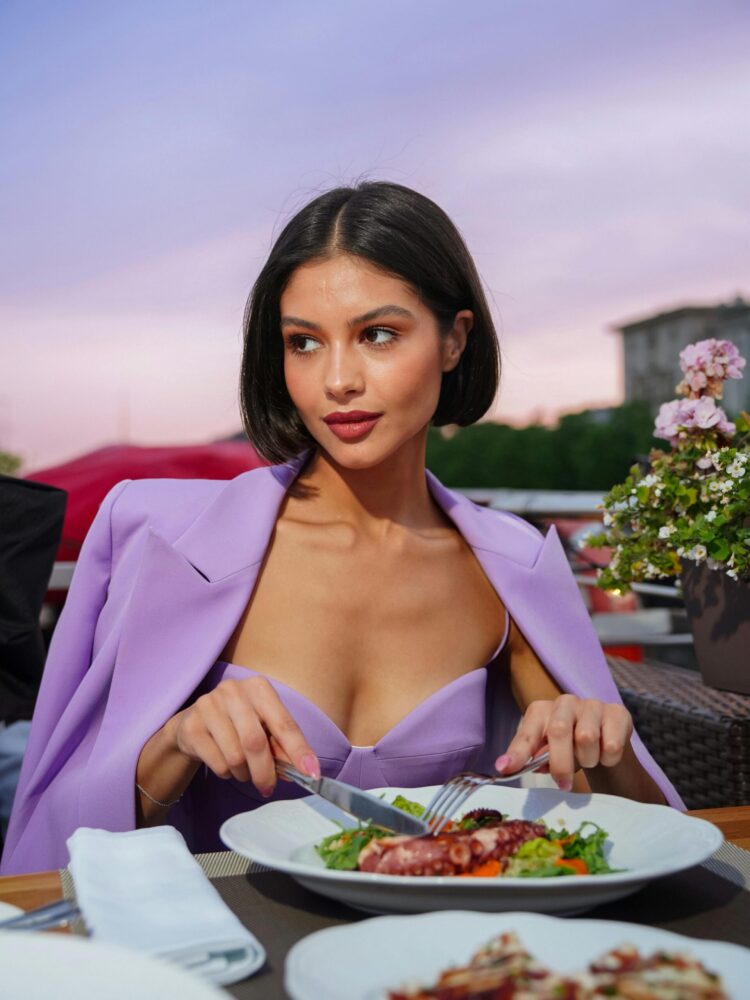Introduction
It may seem far-fetched, but there is a beautiful connection between iconic fashion trends, and modern cuisine. Just like fashion, extravagant cuisines are also a form of presentation art. You wouldn’t wear or buy a dress unless you like the way it looks on the mannequin, and you wouldn’t eat something unless it looks delectable. Interestingly, this association dates back to the 1920s. Ever since fashion has been understood by humankind, it has had an impact on our choice of meals, and vice versa.
The Kinship Between Fashion And Cuisines
When the two are so closely intertwined, how can we miss out the journey from runway to table? So, here are our 5 favorite fashion meets cuisine trends, that are here to stay:
When The Color Palette Met The Food Palate
Perhaps the most interesting thing to note, as we compare the similarities between fashion trends and modern cuisines, is the words associated with them. The colorful palette of fashion shows, that doesn’t shy away from mixing and matching different shades to create iconic fashion looks has heavily influenced the modern cuisine industry.
Not only are the hues of a plate of cuisine borrowed from stylish choices of the ramp, but also the idea of plating a food plate like it’s a piece of art, from adding contrasting colors to matching designs, fashion has taken the cuisine sector for a ride.
From Serving Food To Serving Looks
The fun thing about the affinity between food and fashion is that while the incorporation of fashion in food has made it more sophisticated, the presence of modern cuisines in the fashion industry has made the fashion choices of today more bold and wild. Yet, both of them complement each other, especially when it comes to the art of paying attention to detail. While the runway looks have become quite bold as compared to before, they seem to hold onto a certain panache, with the styles going in and out but the redeeming quality of precision staying intact.
On the other hand, the modern cuisines have redeemed themselves through meticulousness, and exactness in their presentation details, as they serve dishes that not only taste perfect but look magnificent. Along with the richness in their flavors, extravagant dishes like quail eggs, lobster bisque, shrimp ceviche, and beef wellington are also known for their state of the art presentation style.
Sustainability Focused Artisan Seafood
The most positive impact of fashion and food coming together has to be their mutually sustainable art. We all know how much waste the fashion industry produces every year, and so was the case of cuisines and international food choices for meat and seafood, that were consistently depleting our natural resources, both on the land and in water.
However, due to the growing awareness of how harmful these practices are for the environment, both the sectors have now shifted their focus to create art that’s sustainable. From adopting the practice of choosing climate conscious food, using pasture raised meat and eggs, to culinary recycling, the food industry has become vigilant of waste.
On the other hand, the fashion industry has shifted its focus towards sustainable fashion choices such as recycling, thrifting, and using environment friendly fabrics to create crazy pieces of fashion such as the sushi jackets, and broccoli dresses, all of which look and taste equally great.
Growing Preference For Gothic Allure
Goth culture was more of a lifestyle choice; the emo aesthetic, popularized in the 80s, that slowly made its way into the fashion world and from there, became a part of the modern cuisines around the world. Often distinguished by its edgy style, black matte color and muted dark makeup, now we see different fashion designers, especially those with an affinity for gothic culture, embracing the style in their fashion shows.
On the other hand, the unique fashion choice has made its way into the modern cuisines and is an often enjoyed form of presentation with the food choices ranging from China’s renowned gee-ma woo, the infamous italian black pasta, black lattes, to the most celebrated black burger, found around the world.
Incorporation Of Patterns And Textures
The impact of food patterns and textures is quite obvious. From pumpkin shaped dresses on the runway, to vests printed with tomatoes all over them, the looks are made unique with the usage of everyday food items to stir up awe-inspiring looks. It’s obvious that fast food fashion has made its mark in the style industry.
Alternatively, we see mousse created by michelin star chefs that aim to give it a silky texture, quite literally like the cloth. The cotton candy balls, inspired by the fabric, and other exquisite materials are often used to give the food a visually interesting, almost life-like appearance.
Summing Up
The world of fashion and food are already so diverse, that when these two come together, they leave no stone unturned to surprise both fashion and food enthusiasts. Whether it’s an interesting color combination inspired by the latest famous ramp walk, the focus on details, need for sustainable options, an interesting gothic food-fashion choice, or borrowing patterns and textures from each other, the kinship between food and fashion is here to stay.

